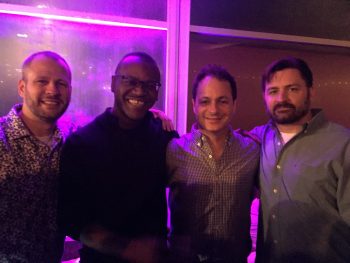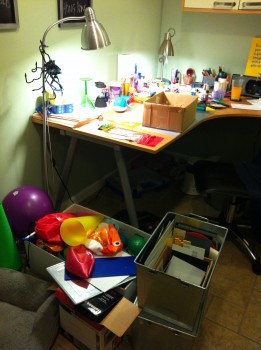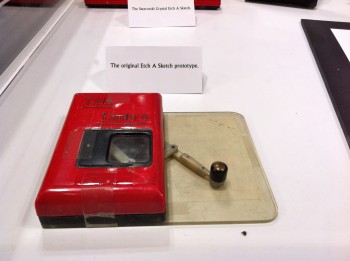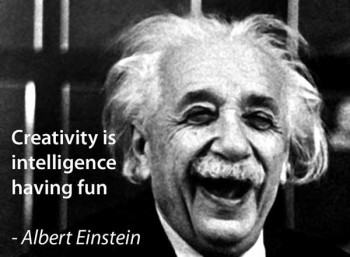by Annie Wolfinbarger
I saw a lot of great stuff at New York Toy Fair. There are really amazing toys coming on the market designed by people who have great insight into how kids play. And, of course, as toy people seeing this great stuff, we regularly get asked what the next big toy will be for Christmas.
My answer? I have no idea. If I could predict what would be a big seller, I certainly wouldn’t have chosen some of the toys that have been the huge hit in the past. Your local anchorperson has ways of figuring that out and letting everyone know on the 6 o’clock news sometime in November what the toy is and that you can’t find it in any store for the next three months.
(I have to be honest with you. As I schlep down miles of toy aisles at Toy Fair, I rather quickly begin to reach a beeping, buzzing, whirring and fuzzy overload. Because it’s a color and noise tornado in that place, I ebb into slowly focusing on how hungry I am or how much my feet are aching. Don’t tell Ryan though. As I drag behind him, he thinks I’m looking, but often I’m just thinking about the big Rice Krispie treat I saw at the deli earlier that day. )

*steps on soapbox*
The one thing that concerns me at Toy Fair and in store toy aisles is the ridiculous number of completely useless toys on the market—the toys that don’t DO anything and sometimes command a hefty price tag for it! Some of the stuff I saw this year left me shaking my head. It worries me that some toy designers aren’t thinking at all about HOW kids play with their toys. There seems to be a lot of slapping a licensed character on something dumb and calling it a toy.
A couple of Christmases ago, my son asked for the hot toy of the season. It was literally the only thing on his Christmas list and all he could talk about for two months. The commercial for this toy showed a couple of joyful kids having the best time of their life playing with this amazing toy! But, Ryan refused to get it. I thought he was just being grinchy when he said, “It won’t do anything. He’ll play with it for 5 minutes and then put it away.”
The way I saw it, I just wanted to get my kid to get the only thing he asked for and the commercial looked cute, so I crossed party lines and bought it anyway. I was so excited for him to open it on Christmas morning so HE could look like those blissful children on the commercial! I knew I was about to make his entire year with this toy.
Guess how that worked out. *shaking my head in embarrassment for being a sucker* He played with it for 5 minutes and then walked away never to pick it up again. It really didn’t do anything it said it could or would. I felt terrible about spending so much money on a stupid toy that now resides on the back of my son’s shelf collecting an impressively thick layer of dust.
If I were in charge of the toy industry, (which I’m clearly not, I can barely make decisions about what to make for dinner) I believe there should be a small list of questions (with a very big title) that every toymaker would have to answer before making a toy.
ANNIE’S INSIGHTFUL LIST OF QUESTIONS TO HELP ELIMINATE USELESS TOYS IN THE WORLD, THEREBY ALSO ELIMINATING A LOT OF WASTE IN A LANDFILL:
1. Does it stimulate the child in imaginative or physical play?
2. Does the child play with it for more than 10 minutes in one sitting?
3. Does the child pick it up and play with it more than 3 times?
Bonus Question: Did they ask to take it to school?
If you answered yes to these questions, you may proceed to make the toy. (If you answered yes to the Bonus Question, you may have the next big toy on your hands. Go make some profit!)
If you answered no to any of these questions, please reconsider making useless junk.
*steps down off of soapbox*

At Gigglicious, anyone who has ever considered one of our concepts can be assured that anything we design has to pass the “kid test”. And believe me, our kids don’t lie about it. If they don’t like something we come up with, they TELL us and they aren’t shy about it.
For all of our concepts, we get the opinions of the neighborhood kids, our girl’s boyfriends (poor guys), kids who come over for sleepovers with our kids, nieces, nephews, young adults, and anyone else in the demographic who might play with or has ever played with toys before! We watch kids and adults play with our prototypes. We ask them what would make it better.

Our goal is to make sure that everything we design is going to be fun, it’s going to engage kids, and make people happy. The most important tenet in our business is that we create things that will bring families and friends together to play and that fun is just the beginning.
To be successful, you have to have your heart in your business, and your business in your heart. ~Thomas Watson, Sr.




 I’ve experimented with green screens, extra effects, and ridiculous fonts no one else should ever use. Searching out the perfect music can sometimes take me half a day. I’m currently trying to figure out how I can work in an explosion effect into a video just because it’s awesome!
I’ve experimented with green screens, extra effects, and ridiculous fonts no one else should ever use. Searching out the perfect music can sometimes take me half a day. I’m currently trying to figure out how I can work in an explosion effect into a video just because it’s awesome!



 Inspiration can be found in a trip to the toy section, surfing the internet, our own kids playing a made up game together, a magazine article, a conversation, a vacation, and even a trip to the home improvement store. Sometimes we sit down and consciously noodle about a particular niche we want to fill for a specific company. Often, for the measly cost of a Chinese dinner, our kids will sit and draw and think with us. (Turns out it’s a small cost because they are good at designing!)
Inspiration can be found in a trip to the toy section, surfing the internet, our own kids playing a made up game together, a magazine article, a conversation, a vacation, and even a trip to the home improvement store. Sometimes we sit down and consciously noodle about a particular niche we want to fill for a specific company. Often, for the measly cost of a Chinese dinner, our kids will sit and draw and think with us. (Turns out it’s a small cost because they are good at designing!)